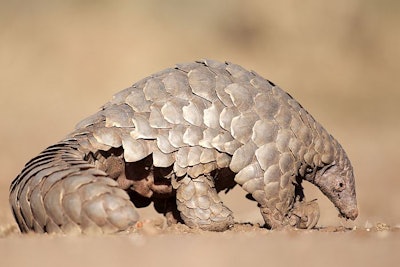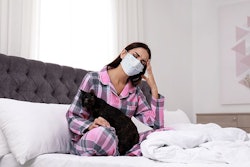
Wildlife conservation’s economic value to humanity became clear in the COVID-19 pandemic. Although, the SARS-CoV-2 coronavirus, which causes COVID-19 disease, pathway to humans from other animals remains under investigation, the disease seems to have moved into humans from wild animals in a live animal market. Genetic evidence, published in Nature, suggests that endangered pangolins may have played a role in the evolution of the SARS-CoV-2 coronavirus, along with bats. Although not as charismatic as pangolins, many species of bat also face extinction.
Pet food formulators use some novel proteins, but pangolin and bat have never made that list, as far as I know. Along with continuing to not turn them into kibble, pet food companies can help pangolin and other wildlife by supporting conservation efforts that reduce the chances of another pandemic. The pet food industry can demand sustainability and husbandry standards for livestock and farmed animals to support biosecurity, animal health and ecological stability. Pet owners tend to be animal lovers, and research suggests that pet food label claims about animal welfare appeal to them. Now, by supporting conservation, pet food brands could show a double layer of support for pet owners by protecting wildlife, while subsequently severing pathways by which diseases pass from exploited wildlife to humans and morph into pandemics.
Pangolin conservation and the COVID-19 pandemic
An obscure beast to most, a pangolin made a cameo in Disney’s live action “Jungle Book” movie. Beyond that, the animals mainly appear in segments on odd animals in wildlife documentaries. Pangolins look like a snake had a baby with an aardvark, and it somehow came out cute.
During the past decade, poachers stole more than one million pangolin to sell their scales for use in traditional East Asian medicines or for their meat, according to the International Union of Concerned Scientists (IUCN). Four species of pangolins, the only scaled mammals, live in Asia. Another four pangolin species live in Africa. Populations of all eight are declining. Some like the Chinese and Javan pangolin are critically endangered.
As wild populations disappeared, farms in China raised pangolin, along with peacocks, civet cats, porcupines, ostriches, wild geese and boar. Nearly 20,000 of these operations closed in February after the COVID-19 pandemic raised awareness of zoonotic diseases, pathogens passed from animals to humans and vice-versa, reported the Guardian. Chinese officials also temporarily shut down live animal markets selling farmed and wild-caught animals and their meat, such as snake, bat and crocodile, but a market remains for these animal products, reported Reuters. In April, Shenzhen became the first Chinese city to also ban the sale and consumption of dog and cat meat, reported the BBC.
Pet food ingredient conservation versus wildlife exploitation
As a Missourian, I have no room to criticize others for eating wildlife. Until recently, one could buy beaver, muskrat, rabbit, squirrel and various other wildlife at Soulard Market in St. Louis. A few generations ago, Missourians hunted deer, turkey, bear and other game to the point of extirpation. Paradoxically, demand for managed hunting resulted in repopulating the state with these delicious animals and the preservation of their habitats. So, my people have been down the road of wildlife over-exploitation and recovery.
Personally, I ate an iguana my neighbor caught in the act of eating his bean seedlings in Honduras. There is a restaurant in New Orleans, where I ate alligator tail on my honeymoon. I dined on guinea pig in Ecuador, where they originated as livestock. The piranha were light and flakey, while alpaca had a hearty beefiness, in Bolivia. Cricket quesadillas in Guadalajara, Mexico shouldn’t be missed. However, none of those animals I ate was endangered, and their use didn’t damage the environment more than conventional livestock.
To the contrary, I believe well-informed harvesting of resources from wild and semi-agricultural areas can put an economic value on intact, or at least functional, ecosystems and agroforestry systems. Pet food companies could boost their sustainability credibility by sourcing ingredients from these supplies. A pet food brand could go even further by directly working with the communities making a living sustainably from their environments. Similarly, some pet food companies bought farms to produce pet food ingredients or developed relationship with specific, local producers of certain crops. With control over the supply of novel pet food ingredients from ecosystems, brands could ensure food safety, biosecurity, animal welfare and sustainability standards were met.
The connection between pet food ingredient production and preventing the next pandemic may seem tenuous. Nevertheless, support for conservation and animal welfare allows dog, cat and other pet food brands to help protect the world from another zoonotic disease outbreak.


















